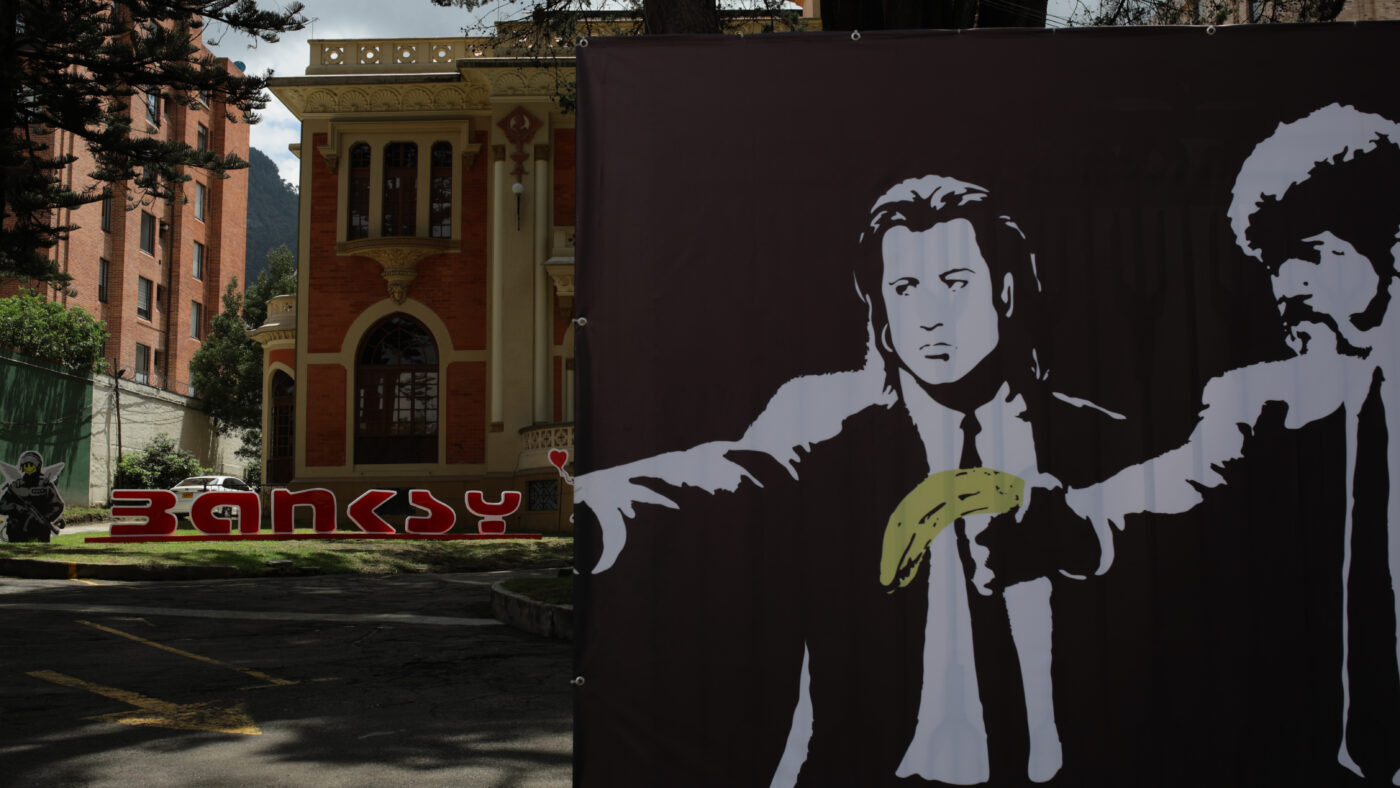Among the various ‘news’ stories that came and went without much notice over the Christmas period was the installation of a new work of art by Banksy in south London. This time the elusive artist erected what was widely believed to be a call for a ceasefire in Gaza: three drones were superimposed on a traffic ‘Stop’ sign. It was stolen in under an hour, which either speaks volumes about how much the residents of Peckham appreciate his agitprop art or, more likely, that a couple of geezers armed with bolt cutters saw an opportunity for a nice little earner which would have made Del Boy and Rodney proud.
The news covered the crime, not the craft, and few actually spent any time analysing the predictably dreary image itself. Banksy isn’t an artist any more and he has nothing to say: his message is not even his medium, it is, instead, all about its location and whether a council or a resident will try to steal it or destroy it. It has as much personality as its artist.
The same is true of other left-wing visual satirists who, along with their fellow progressive travellers, seem to have lost not just their political perspective, but also any sense of humour. Take Christopher Spencer, or Cold War Steve as he is rather more edgily known. Spencer, more than most, personifies how Brexit wrecked satire on the left. Instead of subtlety and subversion, you have endless cut out dystopian collages featuring the usual hate figures of his 425K followers on X/Twitter: Farage, Trump, Boris, you name them, they’re present, and usually with a disgusted Phil Mitchell looking on. It is the same, blunt, bleak, monotone message repeated over and over again. It is the visual equivalent of a siren going off and never stopping. There is zero self-awareness, and no sense that this cut out set of cartoon world views could be anything other than one-dimensional and boring.
The death of satire is, of course, regularly announced. Tom Lehrer famously once remarked that satire died when Henry Kissinger was awarded the Nobel Peace Prize. Perhaps that was true of the United States then (although with a second Trump presidency not unlikely that looks premature to say the least). In this country, satire’s history, and its vitality, and political necessity are long established. Artists like Hogarth and Gillray are among the most infamous figures from history, but their work now is viewed for historical, rather than comedic interest. They have few, if any, modern equivalents today.
Of course, it is not news to claim that political comedy, once subversive, is now sanctimonious and monocultural. The satirical stance of That Was The Week That Was, and Not Only… But Also is long dead. Aaron Brown, editor of the British Comedy Guide, suggested that many popular comedians ‘have this air of intellectual superiority, using comedy to look down on those who see the world from a different perspective.’ That sense of social and intellectual smugness, encapsulated in comedians ranging from Steve Coogan to Stewart Lee, acts as a strong antidote to appreciating anything humorous they are likely to say unless you also subscribe to their views.
But the death of political, visual satire is no less a victim of the world view that has come to dominate cultural institutions, magazines and newspapers. It was not a coincidence when long-standing cartoonists Steve Bell and Martin Rowson both drew images that reinforced offensive, antisemitic tropes in 2023. For them, and those who defended them, they were attacking the establishment, not realising that it is their own world view that now dominates, that has the power. It is inconceivable that any museum or art gallery would provide a platform to artists who are pro-Israel, or pro-Brexit; but that is where satire, and subversion should exist, and be given space to articulate ideas held to be counter-cultural.
Banksy is a billboard, promoting a product, and a set of ideas, that are as ubiquitous as Coca-Cola and as dangerous as Greggs. We need a new set of discordant voices, able to articulate ideas that challenge the consensus view of the new Establishment of the Banksies and Cold War Steves. Voices from neither the left nor the right, but coming from a place of originality, united by a desire to reveal the ludicrousness, and moral bankruptcy, of those who refuse to see it in themselves. And perhaps, in 2024, the most subversive voices would be offering us hope, not despair. I’d steal some art that offered that over drones any day.
Click here to subscribe to our daily briefing – the best pieces from CapX and across the web.
CapX depends on the generosity of its readers. If you value what we do, please consider making a donation.


